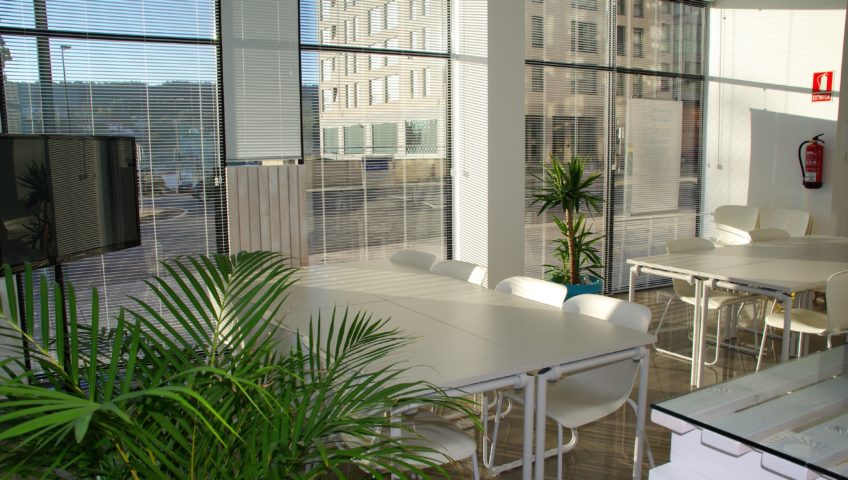
Indoor Plantscaping (part 1)
Many people decide on New Year’s resolution at the beginning of each year. New Year’s resolutions are often focused on improving our behaviors and improvement of ourselves as human beings. Also often focused on improving our health. On this occasion, by helping ourselves we could also help others. How can this be done? The answer we would like to offer is easier than you may expect. A decision regarding resolution depends on our particular needs. Because it could be a broad subject, our focus for today is not on all ideals we could strive towards, but a particular one. It is striving for a healthier working environment in order to improve our health. We would like to discuss the option of introducing plants within the interior design of your portable cabin, as a New Year’s resolution. It is something, we believe, you may find interesting and doable. The reason why we believe it to be a positive goal is mainly based on the vast health benefits plants give us. We will discuss those benefits further. In addition to health benefits, there is plenty more.
No matter what type of business you have, there are suitable plants for interior designs of most. Many interior designs involving plants overtake large spaces of lobbies and shopping malls. It is done in order to impress clients and transform the space into fresh, inviting natural-looking surroundings. Plants often serve as temporary walls, dividing large spaces into smaller, more approachable looking sections. It has been proven that people are willing to spend more money in an interior filled with plants. People perceive architecture with plants included as more luxurious, especially if tropical plants are in use.
Plants are also used within small waiting areas and offices, adding an atmosphere of freshness and warmth. This transforms the area of an office into a positive space where clients are willing to spend more time in. Thanks to the variety of species and sizes, plants have the potential to transform an interior more suitably than real walls and furniture do. Potted plants, for instance, can be rearranged when the needs of the space alter changing the look of the interior instantly. Another important aspect of plants is their noise reducing qualities. This can be used to advantage with the interior design of a cafe, busy office, or large shopping mall. By designing the interior with the use of plants similar to those growing outside, we produce an extension of the natural world. Thanks to that, architecture is more balanced within the environment. There is more.
Our aim is to improve the working environment into healthier conditions by introducing plants within the interior design of our business. To prove that it is a valid goal we would like to introduce a man who performed extensive research on this subject, Bill Wolverton. Wolverton is an environmental scientist who was working in the late 1960s for the US military and has been later funded by NASA Space Agency to work on research into natural environment self-cleaning abilities. There is a vast amount of information that can be found through different sources, including NASA’s website and more on Wolverton’s research. We will discuss his findings partially, but if you would like more information, please follow the links present in the sources section below.
Wolverton first worked on improving the quality of water with the use of plants and then followed with research into improving the condition of air within the building’s interiors. There are many volatile organic compounds (called VOCs) present within the building’s interiors, reducing air quality. The existence of VOC’s was initially identified inside Skylab space station by scientists working for NASA. A problem of volatile organic compounds once known, was found to be particularly heightened in airtight buildings, made with the use of synthetic materials and insufficient air circulation. Wolverton believed in improving air condition not by changing the way buildings are made but by introducing the right amount of particular species of plants within the building’s interior. He believed in nature’s life support system as a solution.
After retiring from civil service, Wolverton opened his own company, called Wolverton Environmental Services Inc. Through his company, he continued his work. He published a book titled “How to Grow Fresh Air: 50 Houseplants That Purify Your Home or Office”. He also published his second book titled “Growing Clean Water: Nature’s Solution to Water Pollution”.
More information on the list of plants Wolverton included in his book. Find more at Our House Plants website following this link https://www.ourhouseplants.com/guides/50-plants-that-clean-the-air .
One of the conclusions of Wolverton’s research confirmed the positive influence of plants on hospital patients, Wolverton’s Company then started co-working with a Japanese company, Takenaka Garden Afforestation Inc, on designing ecology gardens for hospitals.
To be continued in part 2…
Sources;
NASA SPINOFF (2018), available at https://spinoff.nasa.gov/Spinoff2007/ps_3.html (Accessed January 2018)
Wolverton Environmental Services (2012), available at http://www.wolvertonenvironmental.com/air.htm (Accessed January 2018)
Plant Air PURIFIER (2016), available at https://www.plantairpurifier.com/product_details_-_overview.html (Accessed January 2018)
Our House Plants (2018), available at https://www.ourhouseplants.com/guides/50-plants-that-clean-the-air (Accessed January 2018)

Write a Comment